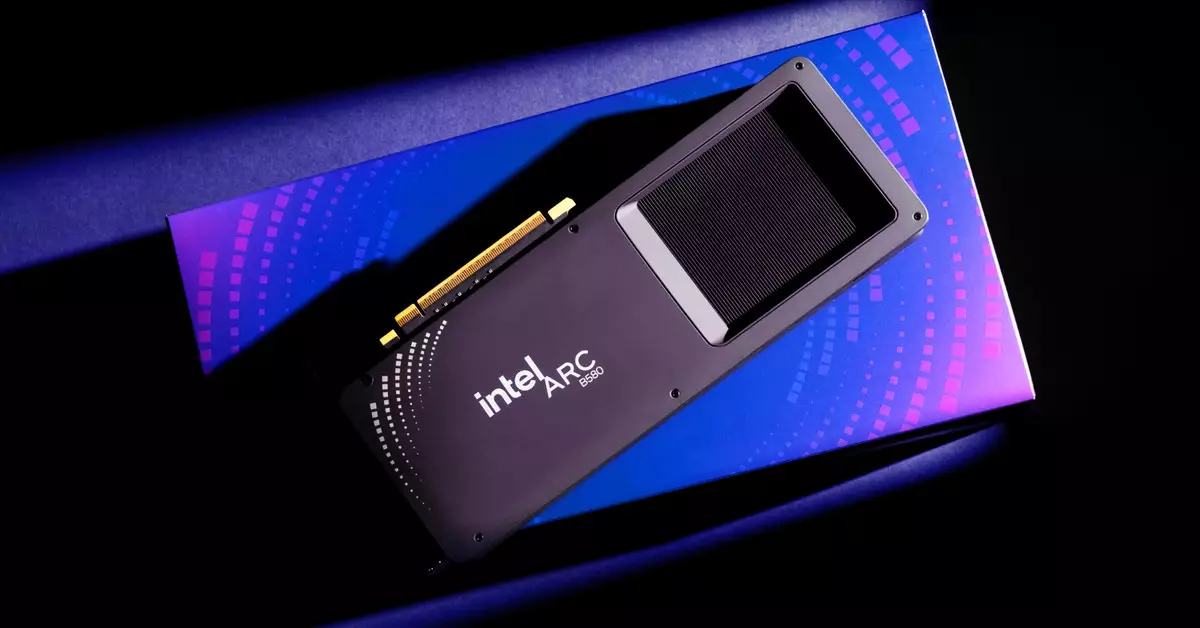After a tumultuous year marked by product delays and a string of underwhelming releases, Intel has finally unveiled a discrete graphics card that has captured attention. The Arc B580 “Battlemage,” priced at an attractive $250, has emerged as a strong contender in the competitive GPU landscape. While this article does not provide a direct examination of the card, the buzz surrounding its launch indicates that it is a significant step forward for Intel in the graphics realm. Emerging from this tumultuous chapter, the B580 is being heralded as a timely relief in a market that has seen high prices and mediocre performance from many established players.
The initial reception for the Arc B580 has been overwhelmingly positive, leading to a swift sellout across retail platforms. Intel’s spokesperson Mark Anthony Ramirez announced that demand is exceeding expectations and that the company is striving to replenish stock on a weekly basis. This ambitious goal reflects an impressive response to what has historically been a challenging endeavor for the corporation. The competitiveness of the B580 relative to its rivals—the Nvidia RTX 4060 and AMD RX 7600—has sparked renewed interest, suggesting that Intel has captured the market’s attention with a product that ticks many boxes for value-conscious gamers.
Critics are already lauding the B580 as a potential game-changer amidst an ecosystem where comparable GPUs have garnered less enthusiasm. Specific reviews have described the B580 as a “breath of fresh air” in an otherwise stagnant segment. Such recognition is significant for Intel, especially within an industry frequently criticized for escalating prices and constrained availability.
While early reports indicate that the B580 does not always outperform its competitors in every benchmark, it shines in key areas that matter to a segment of gamers—particularly those still gaming at 1080p resolution. Reviewers have noted that, despite not always leading the pack, the average performance coupled with a mature driver ecosystem offers a compelling case for the B580. The generous allocation of 12GB of video RAM allows the card to handle resource-intensive tasks more effectively, an advantage that resonates particularly well with those looking for reliable performance without breaking the bank.
Commentators have characterized the widespread criticism of previous Nvidia and AMD cards, with descriptors like “lackluster” and “disappointing,” allowing the B580 to stand out amid otherwise uninspiring choices. In a landscape where Nvidia’s offerings have drawn particular ire, the B580 has found itself in a sweet spot of being both affordable and well-regarded—a status often difficult to attain in the hyper-competitive GPU market.
Despite the enthusiasm surrounding the Arc B580, prospective buyers should remain cautious. Anticipation is building around upcoming releases from AMD and Nvidia, which may potentially overshadow Intel’s advancements. With whispers of new GPU models set to release soon, the B580 could be facing significant competition sooner than expected. Retail queues and price fluctuations are likely as eager consumers seek to get their hands on the latest offerings.
While the Arc B580 may have received praise for its current performance metrics, the reality remains that the tech landscape is ever-evolving. Consumers must remain vigilant as they navigate a marketplace that changes rapidly, particularly with upcoming models from established players that could either erode the B580’s initial foothold or reshape the expectations for what budget-friendly graphics cards can deliver.
Intel’s Arc B580 “Battlemage” stands as a beacon of hope amid a rocky start, with its affordable price point and solid performance drawing attention from both critics and consumers alike. By embracing this opportunity to reclaim a foothold in the GPU sector, Intel may be on the cusp of redefining its legacy in graphics technology. However, as the dynamics of the market continue to shift, only time will tell whether this renewed interest can translate into sustained success for Intel, or if the upcoming waves of competition will overshadow this commendable endeavor.


Leave a Reply